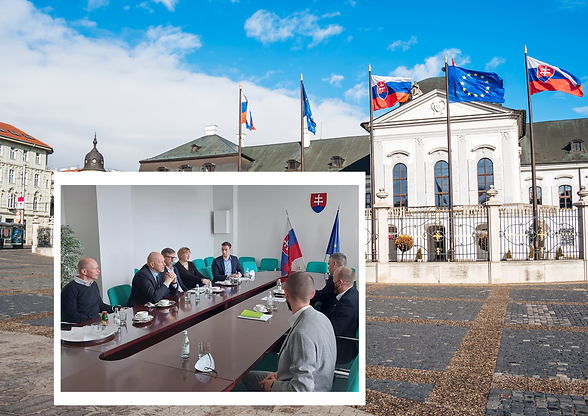
Three national borders surround the Slovakian capital Bratislava. The geographically unique location of the Danube city in Central Europe as an international crossroad for road and rail traffic ensures excellent transport connections, but brings with it complex traffic problems. We discussed the existing problems and possible solutions with Jaroslav Kmeť, State Secretary of the Ministry of Transport and Construction of the Slovak Republic and Tatiana Kratochvílová, 1st Deputy Mayor of Bratislava:
Slovaks commute daily to the centre of their capital from 17 city districts, half of them with their own cars. Added to this is there is intensive truck traffic on the north-south axis from Poland to Hungary.
In terms of air quality, Bratislava is a risk area. Three motorway bridges span the Danube in the city area. According to Kratochvilová, sustainable transport has not been a major priority so far, neither in politics nor among the population.
The current state of transport in the Slovak capital is characterised by negative trends in the effective satisfaction of the mobility needs of people, goods and services, traffic safety and environmental pollution. The result is reflected in traffic congestion. The cause and at the same time consequence of this currently unfavourable situation is the growing share of individual automobile traffic in the total transport performance.


The reasons for this are complex: unattractive public transport services, congestion of the road network and rail infrastructure, suburbanisation, lack of government subsidies for electric vehicles, increased commuting and a lack of north-south motorway connections, traffic is routed through the city.
Cars are allowed to park on the pavement and clog up the neighbourhoods. The city is pushing for a quick change in the law, but the parliament has postponed the legislative proposal for 1.5 years. A uniform parking concept is only just being developed.
Households with three vehicles are not uncommon: on average, there are about 1,100 cars per 1,000 inhabitants. Bicycles are mostly only used for sports near the Danube.
The City of Bratislava wants to counteract these problems with new projects for the construction of motorways, investments in sustainable local transport and the construction of cycle paths. Focus is on rail transport, whose already existing rail network is 80 km long.

fr. l. EAC-Representants; Tatiana Kratochvílová; AKSR-Representants
Everyone wants sustainable mobility, but the state and the city of Bratislava use different instruments. While the state focuses on individual transport, the city of Bratislava is primarily concerned with its residents. Due to the urban traffic problem, this is a tricky situation that can only be solved together.
Tatiana Kratochvílová
1st Deputy Mayor of Bratislava
Positive effects:
The city of Bratislava will in future use buses powered by green hydrogen for local public transport, a solution "with more potential" for Kratochvílová. In addition, projects such as "10,000 trees" are to create lively places that will increase the quality of life and improve air quality, an underestimated problem in Bratislava.
The Slovak Ministry of Transport has high hopes for fuel-cell powered trains. In May 2022, Alstom's Coradia iLint, a CO2 emission-free regional train, drove through the capital for the first time. Modernisation of the railway is urgently needed, the condition of vehicles and rail network is "catastrophic" according to the State Secretary of the Ministry of Transport and Construction of the Slovak Republic, Jaroslav Kmeť.


fr. l. František Bizoň (AKSR); Martin Filzen (EAC); Štefan Mihálik (AKSR-President); Gerrit Reichel (EAC);
Jaroslav Kmeť, State Secretary of the Ministry of Transport and Construction of the Slovak Republic; Roman Török

